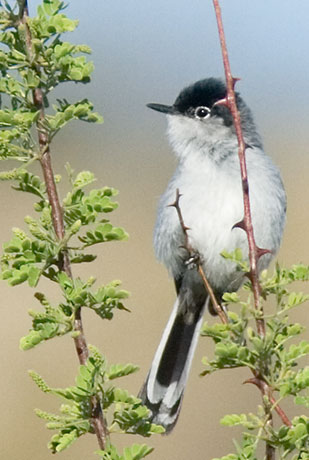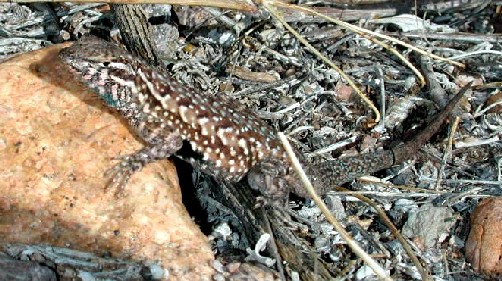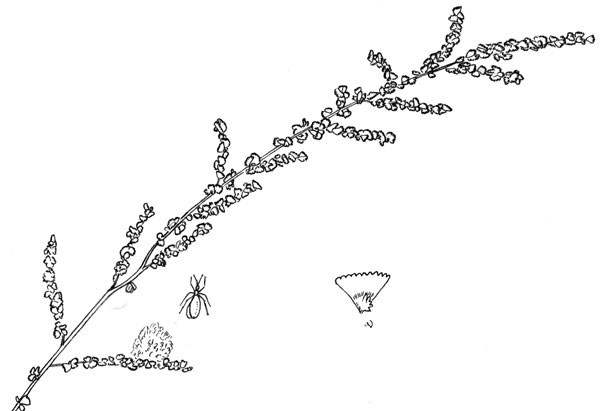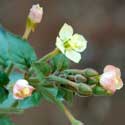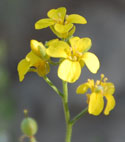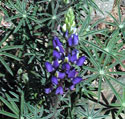Introduction
This wildlife area managed by the Arizona Game and Fish Department is 680 hectares (1681 acres) in size and includes several diverse habitats. It is bounded on the north and west by the remnants of the Gila River where there is some open, ponding water with marshy cattails along side. Extensive areas adjacent to the river are broad, almost impenetrable thickets of deciduous tamarisk (a.k.a. salt cedar) variously interspersed with native willows, cottonwoods and mesquites. Back from the tamarisk thickets are areas of occasional inundation - every decade or so the Gila River overflows. Here there are large mesquites, blue palo verdes, athel trees (an evergreen, non-native tamarisk relative) and gray thorn bushes. The ground water is not far below the surface and occasional patches of salt-encrusted soil can be found.
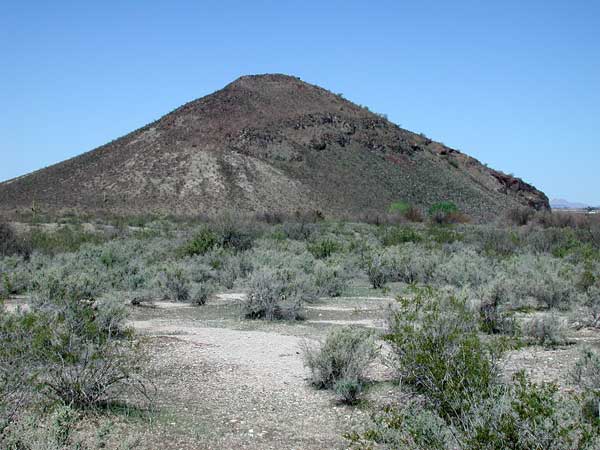
View of Robbins Butte from the south. The gray-green shrubs are Allscale Saltbush.
